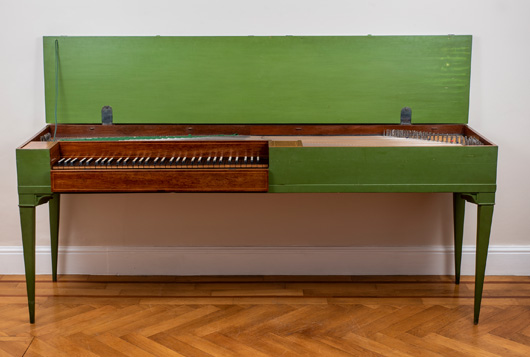Clavichord by Lindholm and Söderström, Stockholm, 1806
Compass: FF - c''''
4' (octave) strings from FF - A.
Compass: FF - c''''
4' (octave) strings from FF - A.

From about the middle of the 18th century Swedish clavichords began to exceed the dimensions of their German counterparts. The adoption of iron stringing and a more Pythagorean scaling, where the strings double in length at the octave further into the bass, produced a very large instrument. In addition, this clavichord has an extended compass that is often seen in keyboard instruments made around 1800. Clavichords of this period present a sober appearance and are without extraneous ornament. The workmanship is excellent, however, and close examination reveals a keen attention to detail in all aspects of manufacture. The combination of a painted case exterior and decorative veneers to the interior is not untypical; sometimes the external painting was grained in imitation of mahogany or rosewood, but more often it was pale blue, white or grey. The size of the instrument allows greater dynamic possibilities and contributes to an impressive tonal clarity. These features, together with the inclusion of octave strings that add a fullness to the bass strings, is perhaps the reason why these instruments remained popular for domestic music-making in Scandinavia until the 1830s.
To visit a musical museum without music is like visiting an art gallery with your eyes closed
Richard Burnett